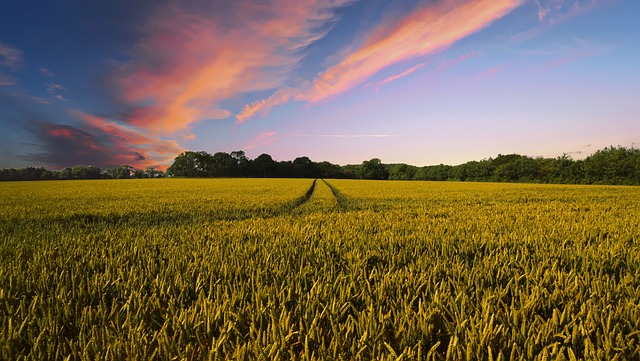Farming is the backbone of India, supporting over 50% of its population and contributing significantly to the country’s food supply. Thanks to its diverse climate and fertile regions, India grows various crops, including rice, wheat, pulses, and spices. Sustainable practices and innovation are key to ensuring the future of Indian agriculture, which remains vital to the nation’s growth and culture.

Why Farming Matters in India
As one of the world’s largest food producers, India grows staples like rice, wheat, and pulses, ensuring food security for its 1.4 billion people and supplying global markets. Beyond economics, farming is deeply tied to India’s culture. Farming is a critical pillar of India’s economy, supporting millions of rural families.
Despite challenges like climate change and water scarcity, farming remains resilient, blending traditional practices with modern innovations. Government support and technology are helping farmers improve productivity and income.
In essence, farming matters because it sustains lives, preserve culture, and drives the economy. It’s a testament to the hard work of millions of farmers who feed the nation and keep India’s agricultural heritage alive.
What Does India Grow?
Here’s a breakdown of what India grows:
1. Food Grains (Main Crops)
- Rice: India is the second-largest producer of rice globally, with major cultivation in states like West Bengal, Uttar Pradesh, and Punjab.
- Wheat: The “wheat belt” of India includes Punjab, Haryana, and Uttar Pradesh, making the country one of the top wheat producers.
- Millets: Crops like bajra (pearl millet), jowar (sorghum), and ragi (finger millet) are grown in arid regions like Rajasthan and Karnataka.
2. Pulses
India is the largest producer and consumer of pulses, which are a key source of protein for many. Major pulses include:
- Lentils (Masoor)
- Chickpeas (Chana)
- Pigeon Peas (Arhar/Tur)
- Green Gram (Moong)
3. Cash Crops
- Sugarcane: India is the second-largest producer of sugarcane, with Uttar Pradesh and Maharashtra leading production.
- Cotton: Gujarat, Maharashtra, and Telangana are major cotton-growing states.
- Jute: Known as the “golden fiber,” jute is primarily grown in West Bengal and Assam.
- Oilseeds: Mustard, groundnut, sunflower, and soybean are widely cultivated for edible oils.
4. Fruits and Vegetables
- Fruits: India is a leading producer of mangoes, bananas, papayas, and guavas. States like Maharashtra, Andhra Pradesh, and Gujarat are key fruit-growing regions.
- Vegetables: Potatoes, onions, tomatoes, and brinjal (eggplant) are widely grown across the country.
5. Spices
India is known as the “Land of Spices,” producing:
- Turmeric
- Black Pepper
- Cardamom
- Chili Peppers
- Cumin
Kerala, Karnataka, and Tamil Nadu are major spice-growing states.
Challenges Faced by Indian Farmers
Despite its importance, farming in India is not without challenges:
- Climate Change: Erratic weather patterns, like unpredictable monsoons, droughts, and floods, make farming risky.
- Water Scarcity: Overuse of groundwater and inefficient irrigation methods have led to water shortages in many regions.
- Small Landholdings: Most farmers own small plots of land, making it difficult to adopt modern farming techniques.
- Debt and Low Income: Many farmers struggle with low incomes and high debts, leading to financial stress.
How Agri-Tech Startups Are Revolutionizing Farming in India
Agri-tech startups are transforming Indian agriculture by bridging the gap between traditional farming and modern technology. Here’s how they’re making a difference:
1. Digital Marketplaces
Platforms like Ninjacart and DeHaat connect farmers directly with buyers, eliminating middlemen and ensuring fair prices. These digital marketplaces also provide farmers with access to inputs like seeds, fertilizers, and equipment.
2. Farm-to-Consumer Supply Chains
Startups like FarmLink and WayCool are streamlining supply chains, reducing post-harvest losses, and ensuring fresher produce reaches consumers. This benefits both farmers and end-users.
3. Smart Irrigation Solutions
Startups like Netsol Water and CropIn are promoting water-efficient practices through drip irrigation and IoT-based systems, helping farmers conserve water and reduce costs.
4. AI and Big Data
Artificial intelligence and data analytics are being used to predict crop yields, optimize planting schedules, and provide personalized advice to farmers. Companies like Intello Labs use AI to analyze crop quality and detect diseases early.
The Future of Farming in India
The future of farming in India is bright and driven by innovation, sustainability, and technology. As the world’s second-largest agricultural producer, India is embracing modern solutions to tackle challenges like climate change, water scarcity, and low productivity.
In the future, Indian farming will be a blend of tradition and innovation, ensuring food security, economic growth, and a better life for millions of farmers. By embracing technology and sustainability, India is paving the way for a resilient and prosperous agricultural future.
